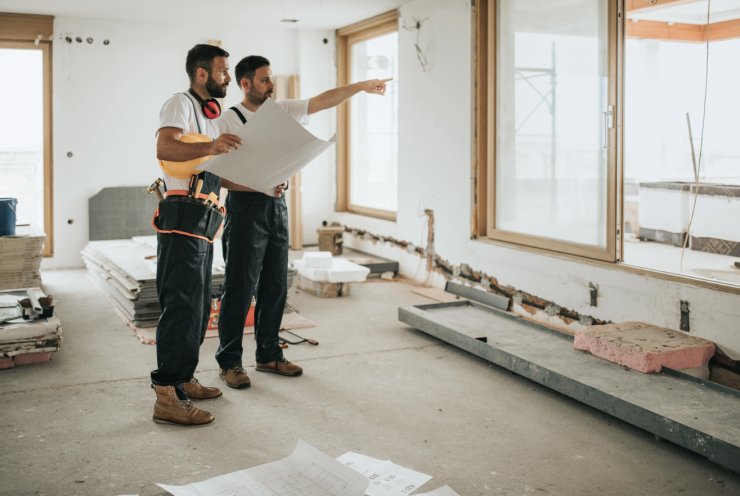How Adding a Bathroom Can Make Your Home Happier
Why You’ll Love Having an Extra Bathroom Thinking about adding another bathroom to your home? Whether you're tired of waiting...

With over 55 million older adults living in the U.S.—and that number expected to double by 2060—many are choosing to remain in their own homes instead of moving into retirement facilities. In fact, only 3% of seniors currently live in assisted living communities. That’s why aging in place design is gaining momentum: it helps seniors live safely, independently, and comfortably for as long as possible.
Not only is it more affordable than long-term care facilities, but with the right renovations, your home can evolve with you—supporting mobility, safety, and convenience.
Aging in place means staying in your home as you grow older, rather than relocating to a retirement or nursing facility. Whether you're buying your "forever home" or want to modify your current space, aging-in-place upgrades help accommodate changing mobility, vision, or health needs.
Start by eliminating safety risks: install non-slip flooring, improve lighting, and secure railings. Keep layouts open and barrier-free to allow space for wheelchairs or walkers.
Most aging-in-place renovations focus on high-risk or high-use areas—especially bathrooms and kitchens. According to the National Center for Injury Prevention & Control, over a third of senior falls happen in the bathroom. In the kitchen, risks include fire, burns, or accidental injury.
Renovating these spaces can significantly reduce hazards and increase independence.
Costs vary depending on the scale of your upgrades:
• Minor modifications (e.g., grab bars, faucet changes): $300 – $3,000
• Mid-range projects (e.g., bathroom renovation, smart appliances): $8,000 – $15,000
• Full-home renovations or in-law suites: $50,000+
Tip: DIY options like installing handrails or smart lights can cut costs. Some upgrades may even qualify for tax deductions. For major work—like widening doorways or building additions—consult a contractor, preferably a Certified Aging-in-Place Specialist (CAPS).
Estimated Cost: $20 – $25,000
Safety is a priority here. Consider:
• Curbless shower or wet room for barrier-free access
• Built-in shower bench for comfortable, seated bathing
• Widened doorway (36" minimum for wheelchair use)
• Raised toilet seat to make sitting/standing easier
• Non-slip flooring or mats
• Roll-under sink for easy wheelchair access
• Grab bars in the shower and near the toilet
• Low-maintenance wall panels (like waterproof laminated tiles)
📘 Want more bathroom safety tips? Check out our guide specifically for seniors.
Estimated Cost: $8,000 – $50,000
Make your kitchen safe and user-friendly:
• Widen pathways to improve mobility
• Lower counters and cabinets for easier reach
• Pull-out countertops for prep surfaces that come to you
• Remote-controlled range hoods
• Roll-under cooktop and sink
• Smooth cooktops to slide pots easily
• Smart appliances with voice control and safety shut-off
• Microwave below counter height
• Wall ovens with nearby pull-out counters
Estimated Cost: $80 – $12,000
Whether modifying your own bedroom or building an in-law suite for loved ones:
• Main-floor bedroom layout
• Bed rails for safer transfers
• Lower bed height (20–23 inches from floor)
• Adjustable beds for comfort and mobility
• Overbed table for easy access to essentials
• Smart lighting to control lights via phone or voice
• Closet lighting and clear bins for visibility and organization
Estimated Cost: $500 – $3,000
Ensure easy entry and exit:
• Replace steps with ramps
• Cover one ramp for rain and snow protection
• Widen doorways/hallways for wheelchairs and walkers
Estimated Cost: $50 – $40,000
Throughout your home, aim for open, clutter-free layouts:
• Wider halls and doorways (36" minimum, 48" ideal)
• Pull-down shelves to eliminate high reaching
• Reposition outlets and switches to 15–48 inches from the floor
• Install stair lifts if your home has more than one level
• Non-slip flooring and avoid area rugs
• Smart thermostats and light controls for easier management
Estimated Cost: $300 – $5,000
Don't neglect your exterior:
• Paint front door in a contrasting color for visibility
• Install lever-style handles for easier grip
• Add automatic entry lights at the front door
• Pathway lights along walkways or ramps
• Widen walkways (36" minimum)
• Raised garden beds to prevent bending and kneeling
• Low-maintenance landscaping using ground cover, hardscaping, and drought-tolerant plants
Aging in place renovations are a smart investment in your long-term comfort, safety, and independence. Whether you make small changes or take on a full remodel, every adjustment brings you one step closer to a future-proof home.
🗑️ Need to get rid of remodeling debris? Rent a roll-off dumpster to keep the job site clean and stress-free.
With over 55 million older adults living in the U.S.—and that number expected to double by 2060—many are choosing to remain in their own homes instead of moving into retirement facilities. In fact, only 3% of seniors currently live in assisted living communities. That’s why aging in place design is gaining momentum: it helps seniors live safely, independently, and comfortably for as long as possible.